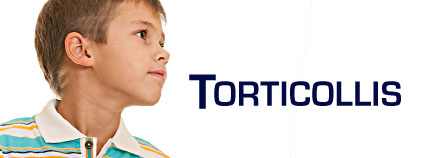
Have you ever had a bad night’s sleep and woken up with a stiff neck? Was it difficult to turn your head? When this happens, it’s called torticollis, which in Latin means “twisted neck.”
Many kids complain of neck pain after things like sleepovers or naps on the couch. That’s because when we sleep in a new or uncomfortable position, the muscles and ligaments of the neck or spine can shift, causing painful pulled muscles or loosened ligaments.
Some kids also get torticollis when they have colds or throat infections (like mono or strep) due to painful swollen neck glands. And neck injuries (or anything else that affects or irritates the muscles of the neck) can cause them to tense up, too.
While uncomfortable (and annoying!) torticollis is usually nothing to worry about. Most kids feel better in a couple days with just a little bit of rest and relaxation.
Signs & Symptoms
If your child’s neck is painful to move, or if it feels tense or strained on one side, it could be torticollis. Another telltale sign: the head will tilt toward the sore side to relieve stress on the neck, and the chin will tilt in the opposite direction to relax the neck even more.
Kids with torticollis also will feel pain when they turn the neck away from the injured side or when the strained area is pressed.
Home Care
Torticollis usually goes away on its own. After a day of rest, a child’s neck pain and head tilt should begin to go away but might not be completely gone for a few days.
Take a look at your child’s sleeping area if he or she first complained of torticollis after waking up. A lumpy pillow or toys in the bed can create an uncomfortable night of sleep. (Remember, to reduce the risk of SIDS never let a child younger than 12 months sleep with pillows, blankets, crib bumpers, or toys.) Making sure the sleep space is safe and comfortable may help the torticollis go — and stay — away.
While your child recovers, limit any activity that causes him or her to turn the head or further strain the neck. Some ways to help your child feel better:
- Offer pain medicines like ibuprofen. If there is any muscle irritation, these can help heal the muscle as well as stop the pain.
- Use warm compresses over the part of the neck that hurts when moved. (Never apply heat packs directly to the skin. Instead, keep a towel or cloth between the heat and the skin.) Only use heat for 20 minutes at a time. Warm compresses can be used every 3-4 hours.
- If the pain does not ease with ibuprofen, the doctor may prescribe a muscle relaxant for a few days.
- For older kids, a soft neck collar may help to keep the neck from moving too quickly.
When to Call the Doctor
If your child’s neck pain isn’t getting any better after you provide home care and make the sleeping area more comfortable, talk to your doctor. Doctors diagnose torticollis by asking how the symptoms started (for example, after a sleepover party) and through a physical exam.
Kids with neck injuries or those whose torticollis doesn’t improve after a few days will need an X-ray to evaluate the position of the spine. A child may need to see a specialist if the neck tilt lasts for more than a week.
Some symptoms can be signs of underlying conditions that might be causing the torticollis. Call the doctor if your child has a tilted head and:
- cannot move the neck
- has a fever, headache, or sore throat
- has trouble eating or drinking, or complains of vision changes
- has recently started taking new medicines
- just isn’t acting like himself or herself
If your child has a medical condition that affects the neck (like Down syndrome), call the doctor right away if your child complains of neck problems. If you’re unsure if your child is at risk for neck problems because of a medical condition, call your doctor and ask.

